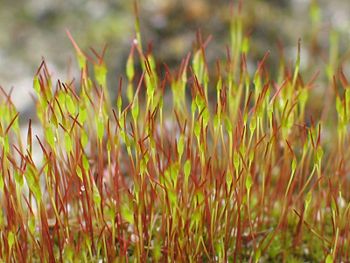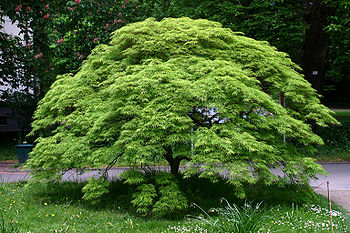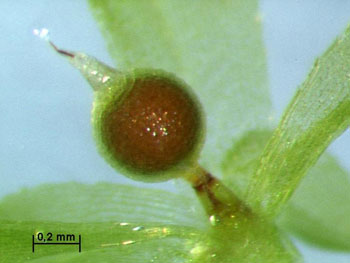Sporophyte
Sporophyte, in certain plants and algae, nonsexual phase (or an individual representing the phase) in the alternation of generations—a phenomenon in which two distinct phases (a haploid and a diploid phase) occur in the life history of a plant, each phase producing the other. (The alternate, sexual phase is the gametophyte). In the sporophyte phase, a diploid plant body grows and eventually produces spores through meiosis. These spores divide mitotically to produce haploid, gamete-producing bodies called gametophytes. The union of two gametes during fertilization produces a diploid zygote, which divides mitotically to form a new sporophyte.The character and relative extent of the two phases vary greatly among different groups of plants and algae. During the course of evolution, the gametophyte stage is progressively reduced; thus, in the higher (i.e., vascular) plants, the sporophyte is the dominant phase in the life cycle, whereas in the more primitive nonvascular plants the gametophyte remains dominant.
 Young sporophytes of the common moss Tortula muralis. In mosses, the gametophyte is the dominant generation, while the sporophytes consist of sporangium-bearing stalks growing from the tips of the gametophytes
Young sporophytes of the common moss Tortula muralis. In mosses, the gametophyte is the dominant generation, while the sporophytes consist of sporangium-bearing stalks growing from the tips of the gametophytesThe sporophyte produces spores (hence the name), by meiosis. These meiospores develop into a gametophyte. Both the spores and the resulting gametophyte are haploid, meaning they only have one set of homologous chromosomes. The mature gametophyte produces male or female gametes (or both) by mitosis. The fusion of male and female gametes produces a diploid zygote which develops into a new sporophyte. This cycle is known as alternation of generations or alternation of phases.
 In flowering plants, the sporophyte comprises the whole multicellular body except the pollen and embryo sac
In flowering plants, the sporophyte comprises the whole multicellular body except the pollen and embryo sacBryophytes (mosses, liverworts and hornworts) have a dominant gametophyte stage on which the adult sporophyte is dependent on the gametophyte for nutrition. The embryo of the sporophyte develops from the zygote within the female sex organ or archegonium, and in its early development is therefore nurtured by the gametophyte. Because this embryo-nurturing feature of the life cycle is common to all land plants they are known collectively as the Embryophytes. Most algae have dominant gametophyte generations, but in some species the gametophytes and sporophytes are morphologically similar (isomorphic). An independent sporophyte is the dominant form in all clubmosses, horsetails, ferns, gymnosperms, and angiosperms (flowering plants) that have survived to the present day.
Early land plants had sporophytes that produced identical spores (isosporous or homosporous) but the ancestors of the gymnosperms evolved complex heterosporous life cycles in which the spores producing male and female gametophytes were of different sizes, the female megaspores tending to be larger, and fewer in number, than the male microspores.
During the Devonian period several plant groups independently evolved heterospory and subsequently the habit of endospory, in which single megaspores were retained within the sporangia of the parent sporophyte, instead of being freely liberated into the environment as in ancestral exosporous plants. These endosporic megaspores contained within them a miniature multicellular female gametophyte complete with female sex organs or archegonia containing oocytes which were fertilised by free-swimming sperm produced by windborne miniatuarised male gametophytes in the form of pre-pollen. The resulting zygote developed into the next sporophyte generation while still retained within the pre-ovule, the single large female meiospore or megaspore contained in the modified sporangium or nucellus of the parent sporophyte. The evolution of heterospory and endospory were among the earliest steps in the evolution of seeds of the kind produced by gymnosperms and angiosperms today.
Some References on Sporophytes
- P. Kenrick & P.R. Crane (1997) The origin and early evolution of plants on land. Nature 389, 33-39.
- P. R. Bell & A.R. Helmsley (2000) Green plants. Their Origin and Diversity. Cambridge University Press.
- Ralf Reski(1998): Development, genetics and molecular biology of mosses. In: Botanica Acta. Bd. 111, S. 1-15.
- T. N. Taylor, H. Kerp and H. Hass (2005) Life history biology of early land plants: Deciphering the gametophyte phase. Proceedings of the National Academy of Sciences 102, 5892-5897.





